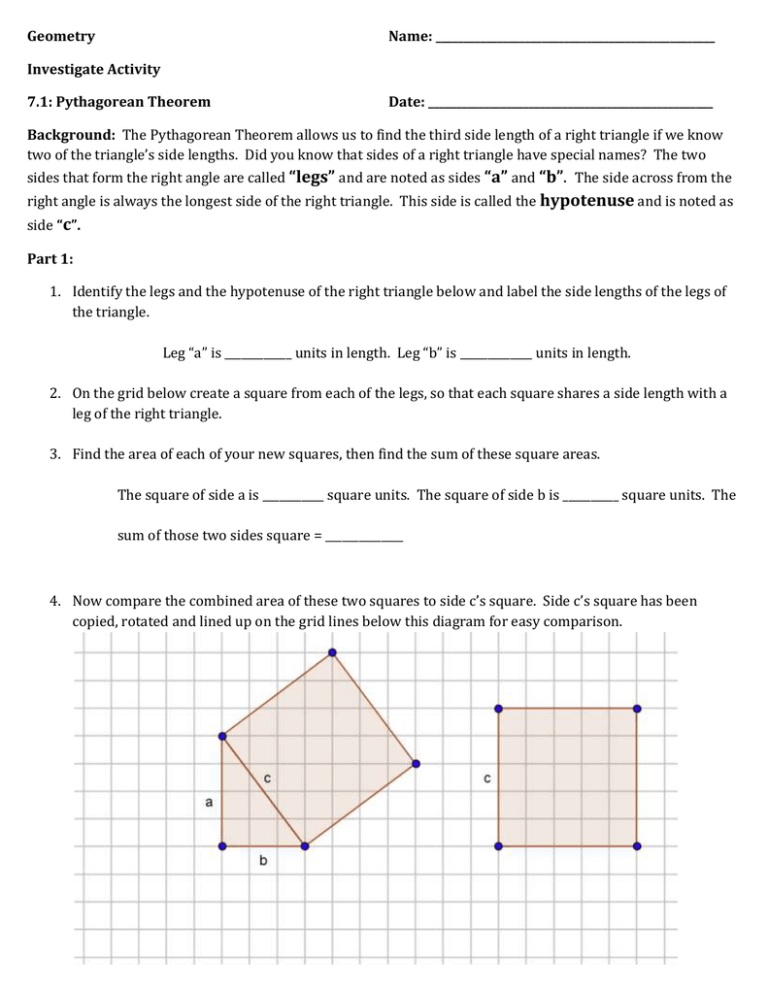Geometry Name: __________________________________________________ Investigate Activity
advertisement

Geometry Name: __________________________________________________ Investigate Activity 7.1: Pythagorean Theorem Date: ___________________________________________________ Background: The Pythagorean Theorem allows us to find the third side length of a right triangle if we know two of the triangle’s side lengths. Did you know that sides of a right triangle have special names? The two sides that form the right angle are called “legs” and are noted as sides “a” and “b”. The side across from the right angle is always the longest side of the right triangle. This side is called the hypotenuse and is noted as side “c”. Part 1: 1. Identify the legs and the hypotenuse of the right triangle below and label the side lengths of the legs of the triangle. Leg “a” is ____________ units in length. Leg “b” is _____________ units in length. 2. On the grid below create a square from each of the legs, so that each square shares a side length with a leg of the right triangle. 3. Find the area of each of your new squares, then find the sum of these square areas. The square of side a is ___________ square units. The square of side b is __________ square units. The sum of those two sides square = ______________ 4. Now compare the combined area of these two squares to side c’s square. Side c’s square has been copied, rotated and lined up on the grid lines below this diagram for easy comparison. 5. The square to the left is the identical size square as the square of the hypotenuse. How do the areas of the side a’s and b’s squares compare to the area of side c’s square? Part 2: 6. Repeat your process from the last problem and record your findings. We have included a rotated copy of the square of side “c” so that you can easily find its area and compare it to the sum of the areas of sides a and b. What do you notice about the relationship between sides a, b and c? 7. What relationship do you notice between the legs and hypotenuse of this right triangle? How does this relate to what you observed in part 1? Part 3: Making Conjectures 8. The Pythagorean Theorem can be used to find the length of one side of a right triangle if you know the other two sides of that triangle. Based on what you have discovered, write an equation that can be used to describe the Pythagorean Theorem. 9. In parts 1 and 2, you were given legs and asked to find the length of the hypotenuse. How might you use Pythagorean Theorem to find a leg length when given the length of only one leg and the hypotenuse?



